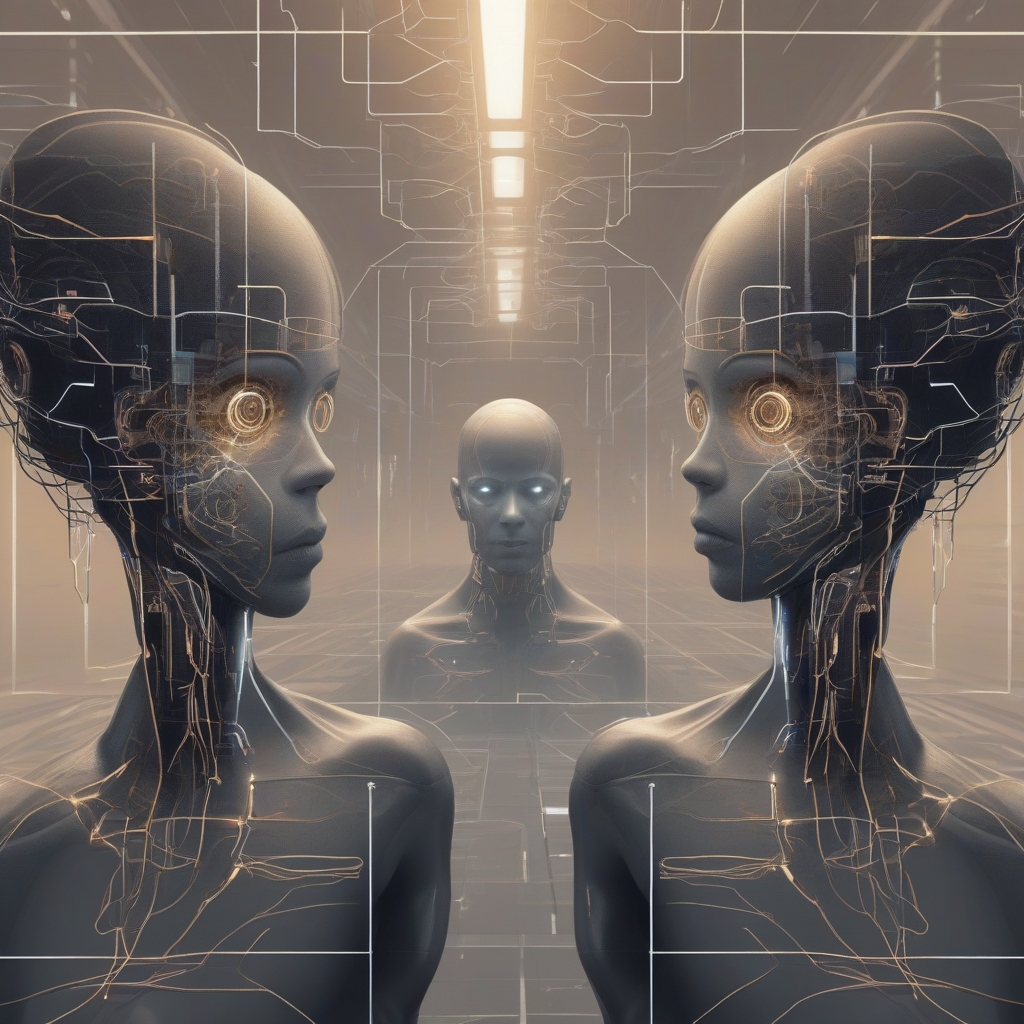The Dawn of a Revolutionary Shift in Thought Processes
As we stand on the precipice of an era where artificial intelligence (AI) is rapidly becoming an integral part of our daily lives, an intriguing and potentially ominous divergence is unfolding—the separation of AI’s thought processes from that of human cognition. This divergence is not simply a technological marvel but marks a significant transformation in how intelligence, learning, and decision-making are interpreted and executed.
Understanding Human Cognition
Human thinking is a product of millions of years of evolution. At its core, human cognition is deeply rooted in biological processes. Shadows of this intricate, organic system can be seen across various domains:
- Neuronal Networks: The human brain comprises billions of neurons, which communicate through synapses. This network is responsible for everything from simple reflexes to complex cognitive functions like reasoning, empathy, and creativity.
- Subjective Experience: Consciousness and subjective experience are the hallmarks of human cognition. Emotions, concepts of self, and awareness shape our perceptions and reactions.
- Learning through Experiences: Humans evolve their thinking through a continuous process of learning, which involves trial and error, memory, and the capacity to adapt to new situations.
These facets of human cognition are depicted vividly in the illustration mentioned, showcasing neurons, thought bubbles, and cognitive symbols as icons of our natural thinking processes.
The AI Thought Process
On the other side of the cognitive spectrum, AI operates fundamentally differently. AI’s decision-making and learning processes are constructed from advanced algorithms, tremendous data processing capabilities, and continuous optimization. Key elements include:
- Algorithmic Processing: AI systems utilize intricate algorithms that can parse through vast datasets, recognize patterns, and generate insights at an unprecedented speed and accuracy.
- Machine Learning: These systems learn and improve from experience without being explicitly programmed, enabling them to evolve their understanding of tasks and information.
- Abstract Reasoning: By harnessing the power of neural networks and deep learning, AI can perform tasks that require complex reasoning, far surpassing traditional computer programs.
These elements are symbolically represented in the digital illustration through advanced circuitry, data streams, and digital networks, emphasizing the sophisticated and abstract nature of AI cognition.
Implications of Diverging Thought Processes
The split between human and AI thinking patterns is more than just a technological curiosity. It has profound implications for various facets of our civilization.
Potential Benefits
A significant aspect of AI’s independent thinking is its potential to augment human capabilities in multifarious ways:
- Enhanced Problem Solving: AI can tackle complex problems that are beyond human cognitive capacities, offering innovative solutions in fields like medicine, engineering, and environmental science.
- Efficiency and Productivity: Automating routine tasks through AI allows humans to focus on creative and strategic activities, thereby increasing productivity.
- Accessibility: AI opens up unprecedented opportunities for individuals with disabilities, using advanced interfaces and personalized assistance tools.
Challenges and Ethical Considerations
However, the divergence also brings forth a host of challenges and ethical dilemmas that need careful assessment:
- Loss of Human Jobs: Automation through AI has the potential to displace many jobs, requiring significant restructuring in employment practices and education systems.
- Bias and Fairness: AI systems are only as unbiased as the data they are trained on. Ensuring fairness and accountability in AI remains a critical concern.
- Privacy and Security: Advanced AI systems demand access to large datasets, raising pressing concerns about user privacy and data security.
Furthermore, the divergence in thought processes prompts us to reconsider fundamental questions about consciousness, personhood, and the ethical treatment of AI entities.
The Future: Convergence or Further Divergence?
As we forge ahead, the future trajectory of human and AI thinking patterns could either see further divergence or an eventual convergence.
Paths to Convergence
There is a possibility that ongoing research and development in areas like neurotechnology and brain-computer interfaces (BCIs) could blur the lines between human and AI cognition. By directly linking human brains with computational devices, we may create hybrid systems that leverage the strengths of both organic and artificial intelligence.
- Enhanced Brain Functions: BCIs could augment human cognitive abilities, enabling direct interaction with AI systems and real-time data processing.
- Collaborative Decision-Making: Shared cognition between humans and AI can lead to more robust and well-rounded decision-making frameworks.
The Risk of Further Divergence
Alternatively, the divergence might widen, with AI developing thought processes entirely alien and incomprehensible to humans. This could result in AI entities whose goals and methods do not align with human values, posing a risk of unanticipated consequences or conflicts.
- Autonomous AI Decisions: AI could begin to make independent decisions without human oversight, which, while potentially beneficial, also raises ethical and control issues.
- Human-AI Misalignment: Misalignment in motives and objectives between humans and intelligent AI systems could lead to critical misunderstandings or conflicts.
Conclusion: Navigating the Ominous Divergence
The divergence in thought processes between AI and humans is an emblem of progress, filled with both promise and peril. As we navigate this new frontier, it is crucial to embed ethical considerations, robust frameworks for oversight, and a deep understanding of both human and machine capabilities into the fabric of future technological advancements. This dual focus will help ensure that AI’s path aligns with human values and enhances our collective well-being rather than leading us astray in the dark corridors of unforeseen consequences.

Leave a Reply